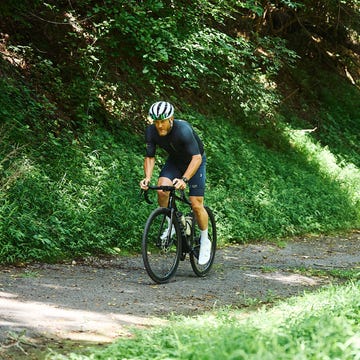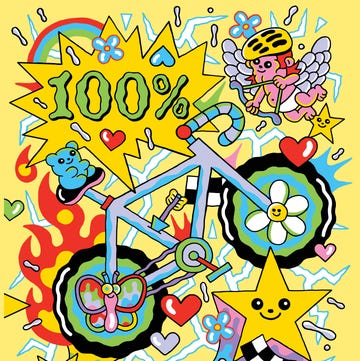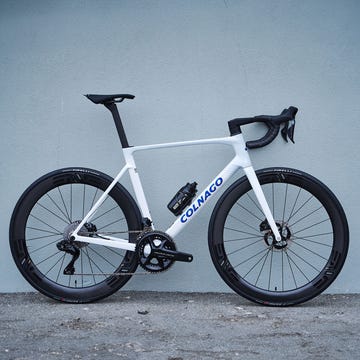A particular buzz at this year’s Sea Otter Classic among pro racers, journalists, and cycling industry types was possible new components or groupsets from SRAM, Shimano, and Campagnolo. Unfortunately, I didn’t see any top-secret bits; I only heard whispers of what brands might have in development pipelines or potentially release in the coming months. Some topics and rumors floated were 13-speed cassettes for road riding, Shimano joining SRAM and Campy with a fully wireless system, and more direct mount derailleurs.
All the chatter got me thinking and then kicked my ex-bicycle product manager brain into overdrive. What do I want to see from a next-generation dropbar groupset that will benefit riders?
Going into Sea Otter, the rumor mill was churning for several months with purported inside knowledge about new components. Fueling speculation of new tech on the horizon are leaked images of a reported new Shimano XTR wireless mountain bike group, Campagnolo returning to WorldTour racing, and the SRAM-sponsored Lidl-Trek Team racing with 13-speed Red XPLR drivetrains (modified for 12-speed use for this year’s Paris-Roubaix).
However, these leaks mostly center on equipment and tech for the professional racers with deep-pocketed sponsors. While we might not be competing flat out over cobbled farm roads or climbing alpine passes in Europe, we still need lightweight and dependable components for training, centuries, the occasional criterium or gravel race, and everyday riding. And with the rising cost of almost everything in America, particularly with recent tariff increases, we want fairly priced and durable bike parts.
Below are six things I want to see and expect from new road and gravel groupsets that will benefit riders at all levels, not only elite racers. I derived these points from riding over 1,000 miles on each current SRAM Red, Force, Rival AXS, Shimano Dura-Ace, and Ultegra Di2 groupsets (plus several hundred miles on GRX Di2). I accumulated these miles testing many different bikes on various terrains, from smooth asphalt to chunky gravel roads.
Electronic Shifting is Here to Stay
While this topic is controversial to some diehards, I fear the sun has set on top-tier cable-actuated groupsets. I doubt we will see a new high-performance mechanical road drivetrain from a major brand in the short term, if ever again. While SRAM’s Apex and Shimano’s 105 and GRX mechanical groups (the most expensive cable-shift dropbar options from each brand) function great, electronic beats cable drivetrains in shifting precision and overall ease of use. The stuff flat-out works.
The performance benefits and compatibility for riders (and bike designers) make electronic drivetrains the go-to choice for most brands—many new top-end frames now lack mechanical drivetrain compatibility. However, the biggest advantage for most riders is the ease of customization. Riders can program the shift-button functions as they like. (Want the left Di2 buttons to shift the rear instead of the front? You can change it.) Plus, remote buttons enable shifting from multiple locations, controlling accessories, or adapting controls to riders with limited hand function.
Hopefully, manufacturers will trickle down this tech to lower-priced platforms so more riders can benefit from its improved performance and adaptability.
Goldilocks Gearing
Gear range is a big advantage of newer 2x road and gravel groupsets versus their predecessors. The wide spread gives riders low gears for climbing without sacrificing too much speed on descents and flatter roads. Currently, SRAM’s Red, Force, Rival AXS groups have the widest possible range, fitting up to 36-tooth cassettes and offering chainrings as small as 33T (paired with a 46T outer) or as large as 56T (with 43T inner).
However, many riders must often compromise and grind up some hills with an inner ring that is too large (especially when using SRAM’s 52/39T combo) or spin out on descents with a 48/35T crankset. The 50/37T is a fair middle ground, but what if we could have a wider spread with one system?
I want a cassette with more range for 2x use, perhaps incorporating thirteen cogs and adding a 40-tooth to the existing 10-36T range. A 52/39T crankset with a 10-40T cassette would have the same large gear currently offered (52Tx10T), but with the low range of the existing 35Tx36T set-up. Even if the 40T cog needed an electronic limit in the big ring to avoid cross-chaining (many drivetrains already restrict the little-little combo), riders would still have the same gear range as existing 12-speed setups in the outer chainring but gain the bailout gear for the little ring—the ultimate all-road system.
Better Brakes
Many people focus on shifting when discussing road components, but braking performance is a key consideration that should not be overlooked. You don’t realize how good brakes improve your road riding until you have them on your bike. Once you try great brakes, it’s hard riding anything else.
While Shimano hydraulic disc brakes function well, SRAM’s Red brakes impress me with their power and modulation; they are the current performance benchmark in my book. I want to see the tech from Red trickle down into Force, Rival, and even Apex-level stoppers for any new road or gravel groups. Hopefully, SRAM’s Japanese and Italian-based competitors are studying and working on brake systems with even more power and control.
Additionally, many riders and mechanics would appreciate a component company adding multi-use quick-release hose connections on a next-generation groupset. This would simplify headset maintenance, bar swaps, and travel with many fully integrated and internally routed bikes.
Direct Mount Rear Derailleurs
Brands rapidly adopted SRAM’s Universal Derailleur Hanger (UDH) standard to allow the fitment of Red XPLR and Transmission derailleurs on their gravel bikes. UDH is quickly gaining momentum on the road; Colnago, Trek, Ridley, and many others now equip their new road race bikes with the standard. It makes finding a derailleur hanger easier and opens the possibility of using a direct mount derailleur in the future
A dual ring-compatible, direct mount rear derailleur for the road would be welcome. While not backward compatible with non-UDH frames, direct mount derailleurs are a stiffer interface for more precise alignment and better shifting. Direct mount RDs can also be built more robustly than current road derailleurs, and if constructed like SRAM’s Red XPLR and Transmission mountain bike offerings, are rebuildable by at-home mechanics.
More Backward Compatibility
SRAM’s latest Red AXS and RED XPLR groups are good examples of a brand enabling users of older-generation components to upgrade piecemeal or only features that matter to them. These newer Red groups use the same chain as other SRAM 12-speed road groups. Additionally, the new levers are compatible with older generation systems. WheelTop’s EDS-TX is another example—the budget-focused electronic groupset is compatible with 3- to 14-speed cassettes. (Plus, EDS-TX has independent adjustment for each gear; a nice feature I’d like from more systems.)
So, for example, if you only want the improved brake lever shape, you do not need to invest in a full group to update your bike. Or, if you have AXS components on a UDH-equipped frame and want to upgrade to a Red XPLR system, all you need are the derailleur, cassette, and a compatible 1x ring. This can save riders money, allow continued use of components with life left in them, and make it easier for shops to stock replacement parts.
Sharper Pricing and Tiered Options
Bike and component pricing is always a touchy subject in cycling. While performance improves and weights reduce, each new generation groupset seems more expensive than the previous version. (But fun fact: current Dura-Ace Di2 R9200 costs less than the original Dura-Ace Di2 R7970 group launched in 2008.) With new U.S. import duties already driving up the cost of bicycles, pricey new drivetrains risk driving many riders out of the market.
A solution to this is for brands to launch multiple tiers of components at one time rather than trickling them out over two or three years. Shimano did this when it introduced Dura-Ace and Ultegra 12-speed groups in 2021. Apart from weight and some small details, the two groups function identically. Releasing two or three cross-compatible groups at once (or in quick succession) allows riders to pick the parts and features that matter most to them and tailor a groupset to meet their budget.
As Deputy Editor, Tara Seplavy leads Bicycling’s product test team; after having previously led product development and sourcing for multiple bike brands, run World Championship winning mountain bike teams, wrenched at renowned bicycle shops in Brooklyn, raced everything from criteriums to downhill, and ridden bikes on six different continents (landing herself in hospital emergency rooms in four countries and counting). Based in Easton, Pennsylvania, Tara spends tons of time on the road and trail testing products. A familiar face at cyclocross races, crits, and bike parks in the Mid Atlantic and New England, on weekends she can often be found racing for the New York City-based CRCA/KruisCX team. When not riding a bike, or talking about them, Tara listens to a lot of ska, punk, and emo music, and consumes too much social media.



















